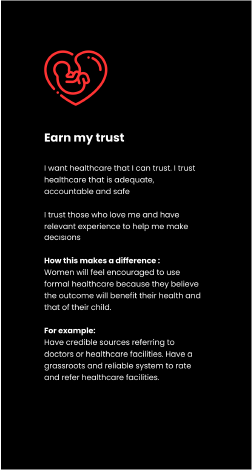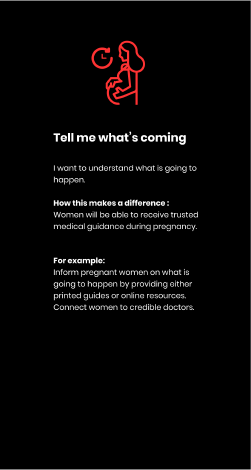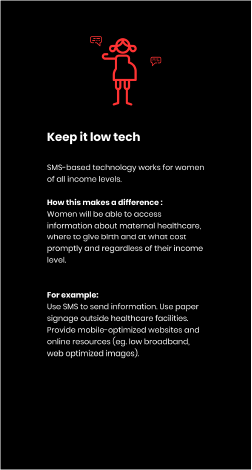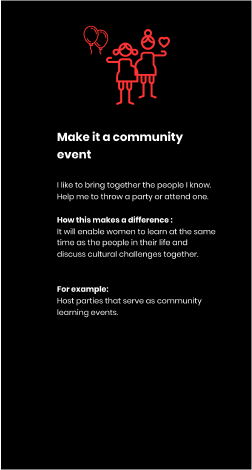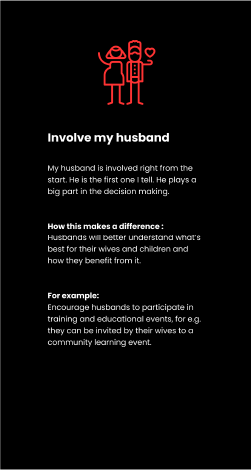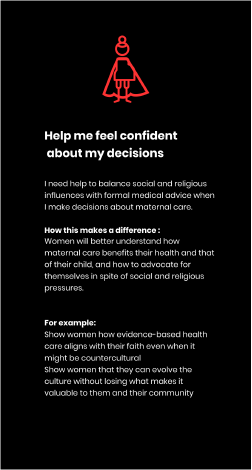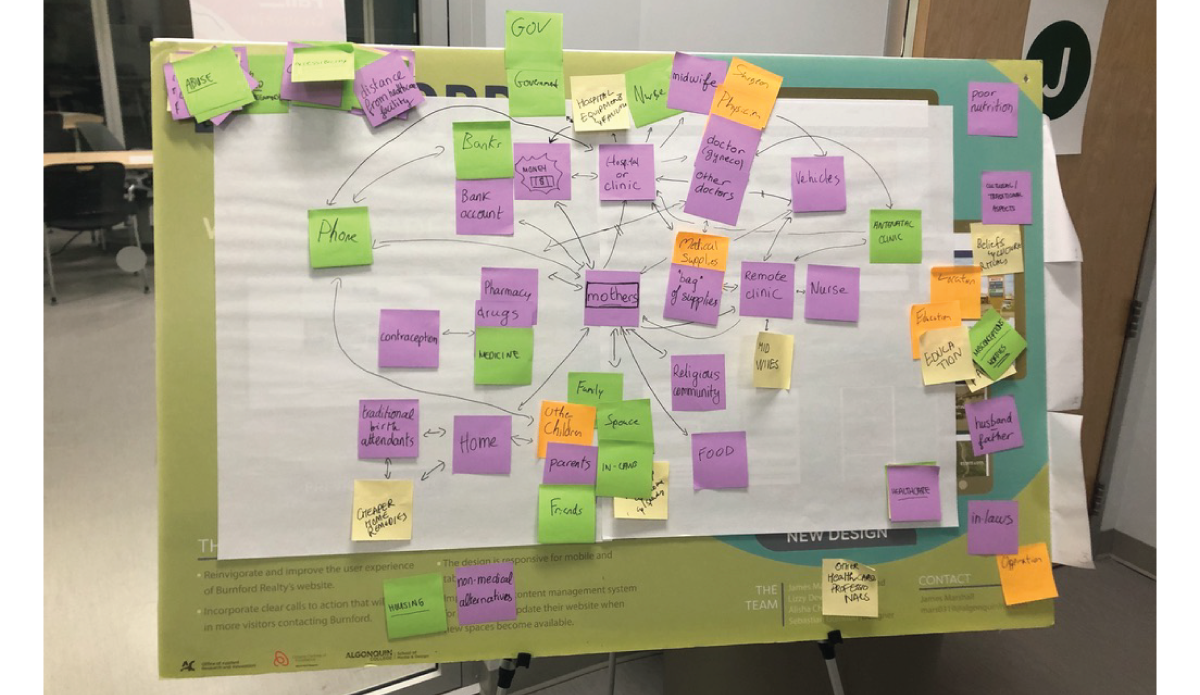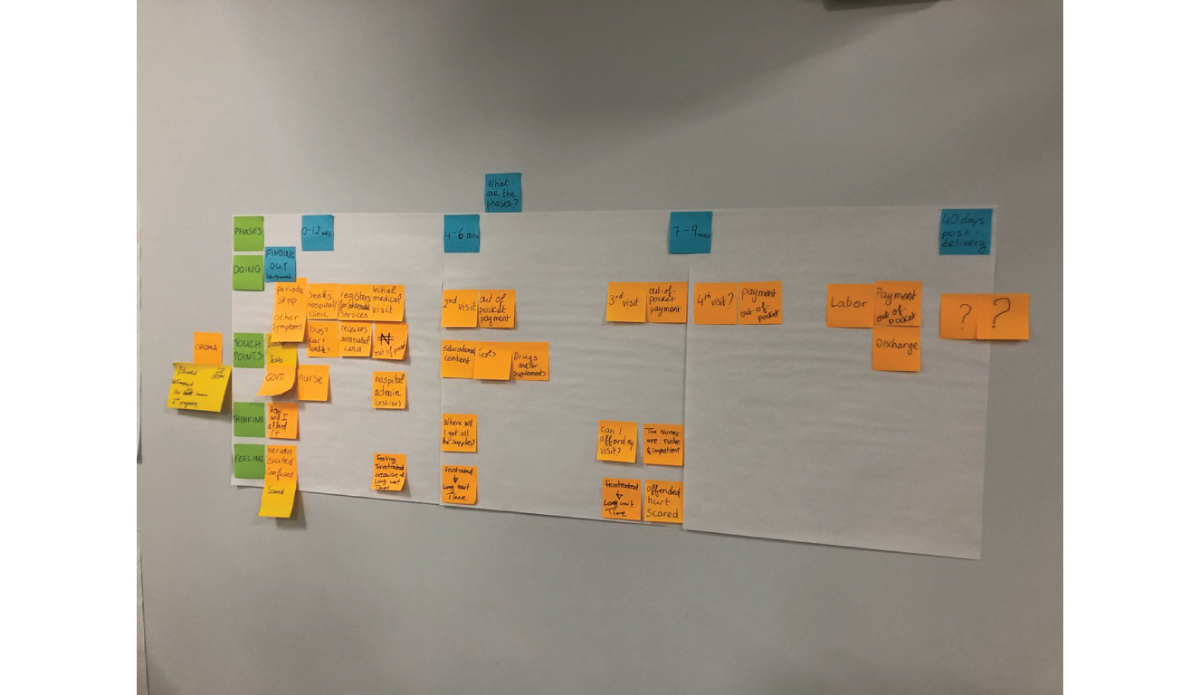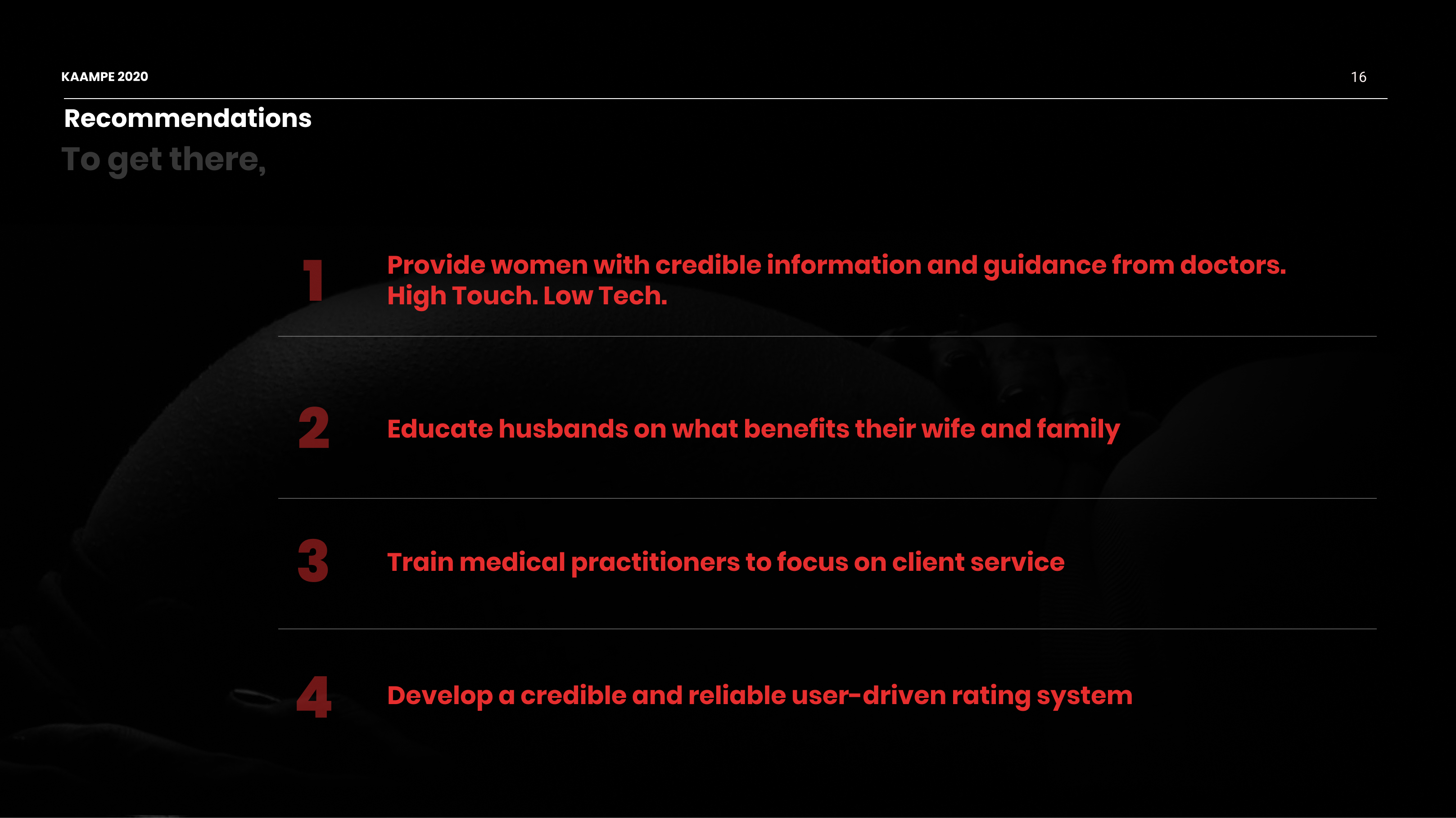Project KAAMPE
- My Role: User Experience Researcher - data analysis
- Duration: January 2020 - April 2020
- Tooles Used: Figma, Google Drive, Survey Monkey, Mural
Project Background
Project KAAMPE results from a partnership between Algonquin College’s Human-Centred Design program, the Council of Entrepreneur for Africa (COEFA) and the Association of General and Private Medical Practitioner of Nigeria (AGPMPN) to help decrease the maternal mortality rate among African women by proposing and developing a strategic framework for the design and development of a product and/or service that helps expectant mothers get access to maternal healthcare services.
The maternal mortality rate among African women is currently one of the highest and most critical public health issues in Nigeria. There has been data that indicates that around 40,000 African women die each year from maternal complications, some of the causes include preventable causes, unwanted and mistimed pregnancies, delays in seeking treatment for pregnancy care, low use of skilled birth attendants, and the inadequate preparedness of the healthcare system to handle emergency obstetric complications.
Project Kampe aims to design solutions that will increase the access of expectant mothers to maternal healthcare. The World Health Organization has identified five barriers to the access of maternal healthcare by expectant mothers. Among those, we chose to focus on lack of information because it might both play a pivotal role and be amenable to simple, feasible and sustainable interventions. The goal of this study is to uncover what information empowers expectant mothers to seek or receive maternal care during their pregnancy, around the time of delivery and up to two months following birth.
My role on the team as a ux researcher was to collaborate with the team on creating SME interview scripts, user surveys, and analyze data to create research artifacts.
Discover
After our preliminary meeting with the client, we put together a research plan to outline what the project goals are and the steps we will take. Our team's initial goal was to gain an understanding of who these women are, who they trust to gain information, where they go to receive healthcare, and when they start seeking healthcare.
Our research question
What mental models are used by Nigerian women to make decisions regarding childbirth, specifically, what factors determine these models, and what sources of information and guidance do they trust to influence their decisions?
We started with some background literature research. We looked into academic research papers to see what research on this subject has already been done and what (if any) steps were taken. We compiled our background research into a Literature Review document containing 20 sources from academic research reports.
With our preliminary background research complete, we had a better understanding of the challenge. With this understanding, we knew what questions would be appropriate to ask in our users. Also, we had started collecting subject matter experts for interviews. One challenge of this project was that we could not go to Nigeria to interview our users directly. So to overcome this challenge we used Survey Monkey and created a questionnaire for women to complete when leaving from their appointment at the healthcare facility. We kept the survey length to 10 minutes so we would keep these women for too long and attempt to get a higher completion rate.
Once the survey was sent out, the team had started interviewing some of our subject matter experts. This included doctors and nurses (both in Nigeria and ones who traveled/worked there) as well as some general residents of Nigeria.
Define
With our research data collected, we were able to start defining the problem.
Our first step was to create a persona to represent our target user base.

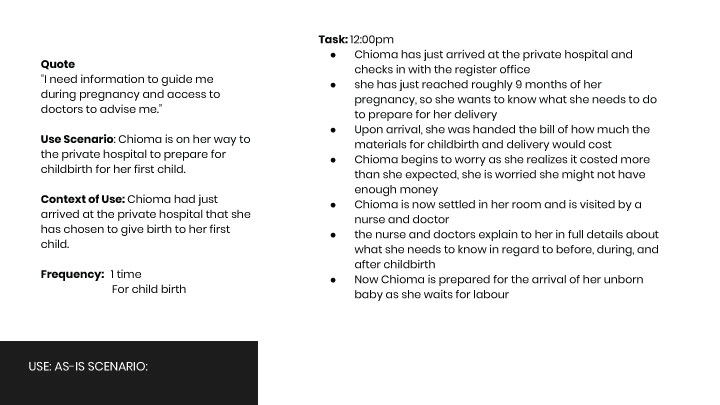
We also created an as-is use scenario so we can see how our persona solves challenges at the time of childbirth.
The next artifact we created was a user journey map.
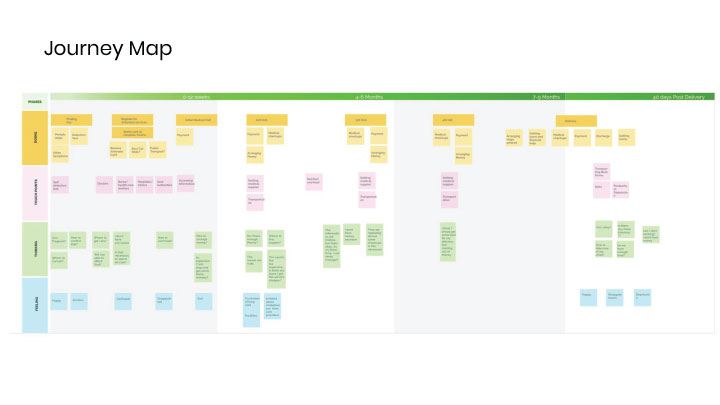
This helped us gain an understanding of how our persona navigates through her pregnancy. This also showed us the major pain points in our area of focus.
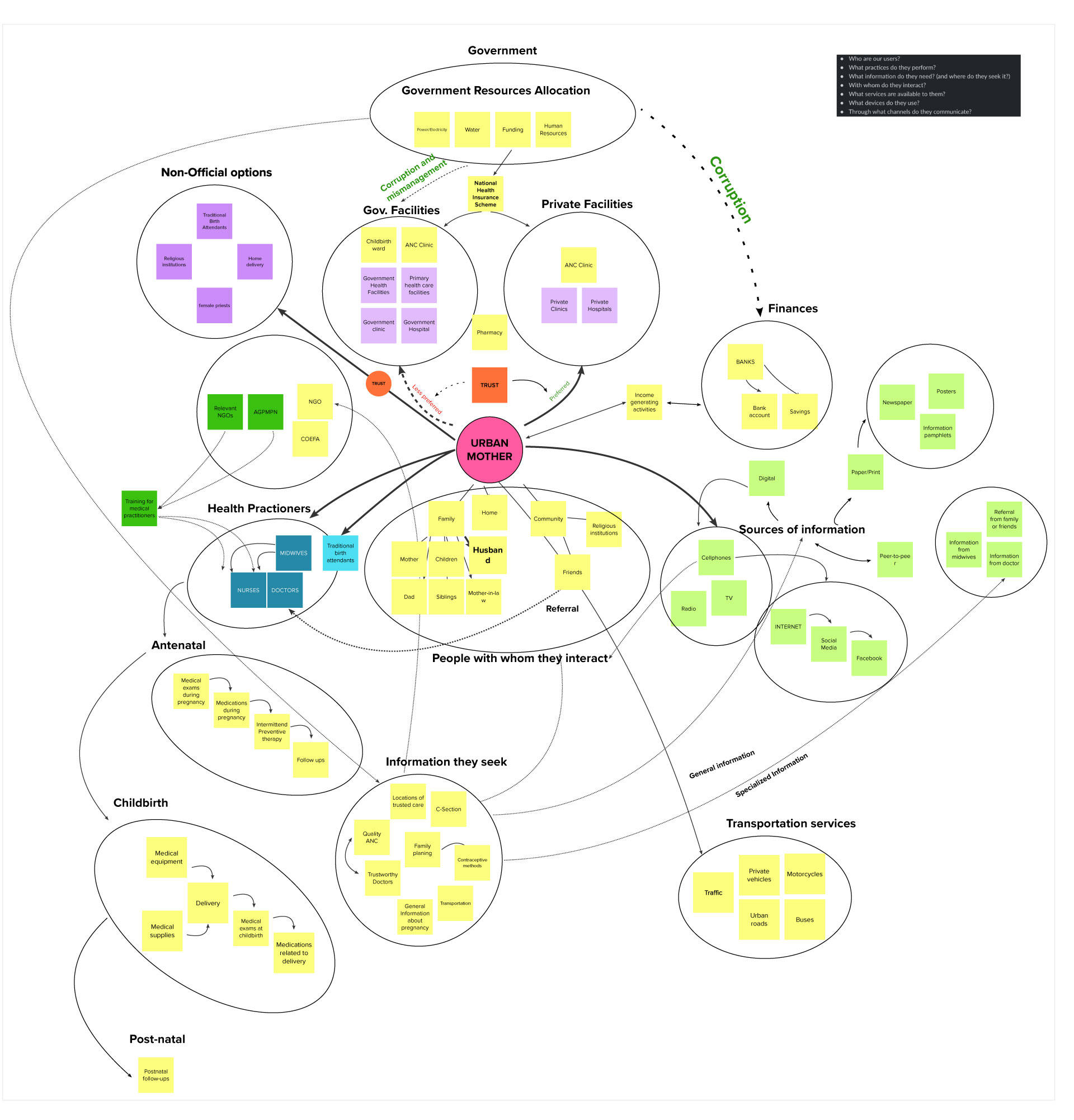
Another artifact we created was an Echo System Map.
We used this map to identify the different interactions urban mothers have in relation to their pregnancy.
Since the doctors are one of the main touch points for our users source of information, we also mapped out their interactions in relation to the health care they provide to these women.
What we delivered
The goal of this project was to understand our users needs and outline the major pain-points.
Since a solution was not part of the project scope, our final deliveries to our client was all survey data, research artifacts, our final project presentation , design principles, our recommendations, and a full written repor
These design principles will help the design team create solutions that will fit into our users lives.
